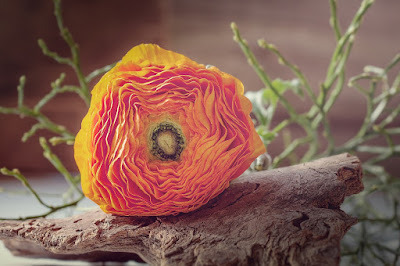The smell of vintage Pantene shampoo is as dear to me as the smell of old books. Although they smell nothing alike, the two stand side by side in my olfactory mind and are linked by a teenage memory.
It's a sunny day in the late 1970's and I'm walking down Fordham Road past the Thom McCann shoe store in my neighborhood. I'm about to cross the street to get to the Bronx Central Library on Bainbridge Avenue. I see my ex-best friend from childhood with her new best friend as they are leaving Nardi Hair Salon. They've just gotten their hair done and the light from the sun makes their long hair (brown and red, respectively) look like rivers of color undulating in the sun.
I would always tell the redhead that her hair was orange and wasn't truly red. (Anyone who ever owned a box of crayons would know that.) I avoided both girls on my way to the library because seeing their carefree post-coif stroll reminded me that my family had less money. (As an adult I was informed that the fathers of both girls dabbled in graft and cronyism so who knows who really "paid" for those haircuts.)
Nardi used salon versions of Pantene shampoo and conditioner that they advertised in their second floor window which included generic headshots of tony models donning the latest hairstyles. I remember seeing giant gallon containers of Pantene shampoo and conditioner sitting next to the hair washing stations at Nardi when I met a friend who worked there on weekends (she and I took on summer jobs as soon as we turned 13).
The smell of Pantene that was sold in gold-topped bottles at the drugstore in the 1970's was out of this world. A blend of heliotrope, creamy sandalwood and musk perfumed every strand of hair in a hedonic afterglow diffused by body heat.
The salon versions of shampoo and conditioner had the same prestige scent, but they were more aldehydic which was in step with smelling like an expensive French perfume. (Prestige hairsprays also benefitted from this type of well-executed functional perfumery, which mimicked classic perfumes.)* I don't know why I remember this, but when I think about the shampoos of my youth I can remember all of their smells.
*Functional perfumery can be more challenging than traditional perfumery as functional perfumers, who are chemists, have to manage naturally occurring odors in personal and household products. They are the unsung heroes of the art of perfumery.
In the late 1990's, after jumping on the all-in-one shampoo and conditioner bandwagon, the scent of Pantene took a fruity turn and smelled like a collection of headdresses worn by Carmen Miranda that had been curated for an exhibition in an overripe fruit museum. I hated Pantene for doing this and started buying shampoo sold in salons.
I enjoyed reflecting on those two undulating rivers of brown and red hair that were etched into memory. I wanted to resurrect that remembrance with my sense of smell. Last year I bought a bottle of Pantene Pro-V Overnight Miracle Repair Serum that is formulated to condition hair as you sleep. The hair remedy is packaged in a pump dispenser that cannot be sniffed like other items in the hair care aisle. (The most public smelling you'll ever see happens in the hair care aisle because hair care aisles are veritable smell museums.) This serum had an interesting side effect after I put it on my hair that evening. Once the product was absorbed it began to react with the heat generated by my head, which was resting on a pillow.
An olfactory bouquet of vintage Pantene bloomed and resurrected memories in the dark. It was a powerful sensation that felt like dreaming with my eyes open. The smell of vintage Pantene allowed me to witness the past in the present, and was perfumed by the fact that how I felt about what I was sensing belonged to me and no one else. Not even a Faded Glory and Frye boot-wearing mirage that chose to be friends with an orange-haired girl instead of me.
Notes:
Many people crave the scent of vintage Pantene shampoo. A post titled "That Old Pantene Smell" and others like it echo this nostalgic sentiment. Rumor has it that Infusium 23 elicits a Pantene flashback that goes back to the Hoffman-LaRoche formula. Pantene was purchased by Proctor and Gamble in 1985.
Shampoos of note from my childhood include: Body on Tap, Castile shampoo, Breck, Earthborn, Egg Shampoo, Flex, Gee Your Hair Smells Terrific, Johnson's Baby Shampoo, Lemon Up, Pantene and Prell. It's not uncommon for popular scents to reappear in the formulas of other brands decades later. If you are bent on the smell of nostalgic shampoos visit the Vermont Country Store. They are currently offering versions of Lemon Up and Egg Shampoo.
Human hair retains scent longer than skin retains the smell of perfume. This is due to the layers of overlapping cells that form the cuticle, and heat generated by the scalp.
Faded Glory was a brand of designer jeans that were popular in the 1970's.
The Bronx Central Library was located in a building designed by McKim, Mead and White (they designed Columbia University and Pennsylvania Station in New York City). The Georgian revival style of the two-story structure and the inclusion of a wing along the rear facade provided a haven for inquiring minds and book lovers of all ages. You could feel history as soon as you walked inside and smell knowledge wafting out of the pages of books. The building, which was known as the Bronx Central Library when I was growing up, is no longer open to the public as the library has been relocated and is now the Bronx Library Center. The historic structure has been unoccupied since 2005.
Image of Hair Collage by Michelle Krell Kydd. All rights reserved.


























